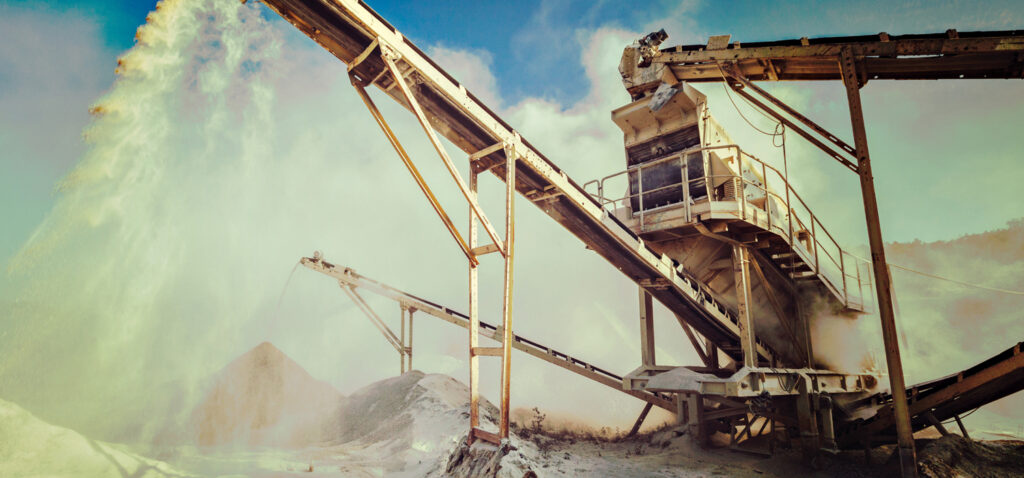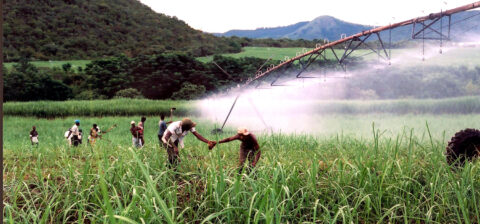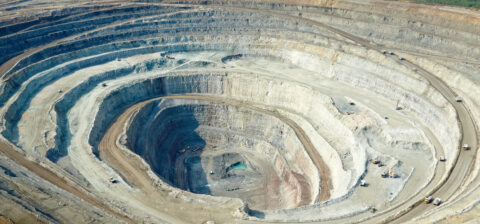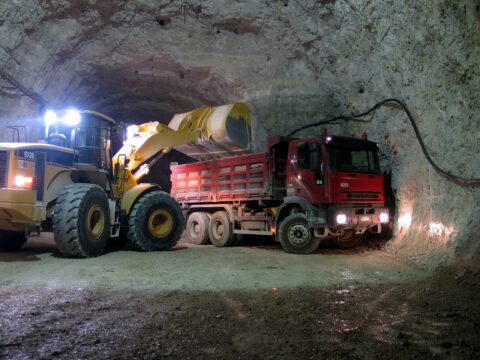SA Mining
The New Cadastral System Is Here!
By Rodney Weidemann
The South African Mineral Resources Administration System (SAMRAD), launched in 2011 to address issues around mineral resource administration, has faced numerous challenges in the years since then that have massively impacted the mining industry.
These include delays in processing applications, technical issues, and a lack of transparency, all of which lead to investor uncertainty and hindered development.
After many years of frustration, the industry received a welcome boost at the Junior Mining Indaba, where Tseliso Maqubela, Deputy Director-General for Mineral and Petroleum Regulation at the Department of Mineral and Petroleum Resources (DMPR), announced the implementation of a new cadastral system for the country.
“We want to ensure our miners have sufficient information to be able to make the correct decisions around projects and applications, and can promise you all that the cadastral system we are building will enable exactly that,” he told delegates at the event.
“We will begin by rolling the system out regionally, beginning in the Western Cape. This is a relatively manageable mining jurisdiction, and one with no appreciable backlogs, so it is the ideal arena in which to test the efficacy of the system.”
Maqubela says the rollout will continue in the Eastern Cape and then the Free State, with the other regions to follow.
“We are undertaking data migration, as well as the validation of this data, by ensuring that it is audited effectively. Once we reach this stage, where we are happy with the operation of the new system, the SAMRAD system for the region will be switched off, and new applications can only be made via the new cadastral system.
“The DMPR is on track to deliver a robust and effective cadastral system, and we want to ensure that – following its launch – we obtain feedback from users, so that we can make adjustments as we receive this input, and utilise it to make adjustments and improve the system.”
New system, new opportunities
So the real question now is: what changes will the new cadastral system bring, how will it streamline mining rights applications, and what benefits will this deliver to the local mining sector?
According to Tamia Martin, associate at NSDV Law, the new cadastral system will, among others, introduce a grid-based mapping model, which is meant to clearly identify parcels of land where the land has pre-existing rights or whether an application for a new right can be submitted over such a parcel of land.
“It should also display relevant operational data, including the details of a company that may be actively conducting mining operations on a particular parcel of land, as well as expedite the processing of applications for mining and prospecting rights, and improve the quality, accuracy and accessibility of all relevant information,” she says.
“In 2024, the Minerals Council South Africa estimated a backlog of more than 3 000 applications for prospecting and mining rights, which would have an investment value of more than R30-billion. It is clear that if the new system can expedite the processing of applications, this will, in effect, create investment in SA, which will lead to job creation and the upliftment of communities surrounding mining areas, through holders of mining rights complying with their obligations in terms of social and labour plans.”
Furthermore, she adds, mining is a capital-intensive undertaking and security of tenure of a mining right is an important factor in considering whether to invest in a project. The elimination of overlapping rights will go a long way towards providing security of tenure for mining right holders, which will lead to further investment in SA.
According to Fred Arendse, Junior Mining Council (JMC) president, launching nationwide without rigorous testing would be reckless given SAMRAD’s legacy. “Testing identifies technical glitches, process bottlenecks, user interface issues, and training needs, before full rollout, thereby minimising disruption,” he says.
“The Western Cape is strategic for several reasons. For one, it has fewer active mining applications/licences, compared to hotspots like the Bushveld or Witwatersrand, so it is easier to manage initial volume.
“Additionally – being a controlled environment – it allows for focused training of officials and users, without overwhelming pressure.”
Arendse says having a functional system will help South Africa resolve many of the issues that plagued SAMRAD.
“Among these is the challenge of double granting, when the same ground is awarded to multiple applicants due to lack of real-time visibility. It should also end licence hoarding/speculation, where companies hold licences indefinitely, without working them, waiting instead to sell at inflated prices. This will be reduced by transparency and ‘use it or lose it’ enforcement.”
In addition, he says, a “less opaque system will lower bribery and corruption, as officials will be unable to demand bribes for ‘speeding up’ applications, or manipulating outcomes. Transparency reduces such opportunities.”
Other benefits he highlights include minimising fronting and clandestine deals, as hidden beneficial ownership and secret licence trading become much more difficult; avoiding administrative capture, where the system is manipulated by officials to block competitors, or favour specific applicants; and reducing endless disputes through clear, accessible records around boundaries and ownership.
“For junior miners specifically, the new system should help to level the playing field, as success should now be based on merit, and technical proposal quality. Furthermore, shorter, predictable application times allow juniors to secure licences and raise capital based on defined timelines,” he says.
“There is also a lower risk of capital being tied up for years in administrative limbo, making SA projects more financeable, while a clear view of available ground and licence status enables better targeting and planning.”
Lastly, he adds, a functional system is the primary requirement for junior explorers and their financiers to re-enter the SA market. This is vital for reversing the exploration spend collapse.
Impact of B-BBEE requirements
However, despite the enormous potential the new system offers, there remains fear that the DMPR may impose broad-based black economic empowerment (B-BBEE) requirements on prospecting companies, even though these were previously excluded from such legislation. This may negate the benefits mentioned above.
Arendse indicates that applying full BEE mining right requirements to prospecting rights would be a catastrophic policy error.
“It fundamentally misunderstands the risk-reward profile of exploration. While promoting inclusivity is crucial, mechanisms like mandatory community engagement, skills development contributions, or options for future B-BBEE participation, upon successful discovery – at the point of conversion to a mining right – are more appropriate for the prospecting phase,” he says.
“The benefits of the cadastral system for juniors would ultimately be severely undermined, if not entirely negated, by imposing premature and onerous B-BBEE equity requirements.”
Muhammed Khan, legal practitioner at NSDV Law, states that, as with most things, there are pros and cons to including B-BBEE requirements at the prospecting right stage.
“At the prospecting right stage, there will be no income anticipated and all funding should ideally be directed to drilling and determining the existence and extent of a mineral resource. A B-BBEE requirement could be considered as a barrier to entry or investment, if any funding has to be directed to facilitating such a requirement,” he feels.
“That said, the inclusion of a B-BBEE partner at the prospecting stage could assist in other ways. This includes facilitating community engagement and access to funding from entities that require specific B-BBEE shareholding.”
Furthermore, says Khan, if the mineral resource is identified and a mining right is applied for, having to source a suitable B-BBEE partner at that stage could delay the mining right application process.
“And, of course, introducing an unknown partner at this stage could also negatively impact the mining operations, as there is no pre-existing working relationship between the shareholders.”
Looking ahead
In the short term then, the successful implementation of the new cadastral system could restore confidence in South Africa’s mineral regulatory environment, by introducing much-needed transparency, predictability and efficiency, says Lili Nupen, co-founder and director of mining, environmental, and energy law at NSDV Law.
“This would likely result in an increase in prospecting applications, particularly from junior miners who have long been discouraged by administrative delays, and uncertainty of the availability of land under the SAMRAD system,” she says.
“Over the medium term, however, improved access to reliable data on land availability and existing rights would enable more informed investment decisions, potentially attracting both local and foreign exploration companies.”
In the longer term, notes Nupen, a functional, modern cadastral system – if supported by broader policy certainty and regulatory reform – could help reposition SA as a leading mining investment destination.
“This could encourage the discovery of new mineral deposits, and ultimately contribute to increased mining activity, job creation and economic growth,” she says.
Of course, such a positive view of the future is dependent on realising the best-case scenario, suggests the JMC’s Arendse.
“This requires complementary reforms, including policy stability – especially on B-BBEE for prospecting – as well as competitive fiscal terms, reliable infrastructure from an energy and logistics perspective, effective environmental regulation, and skilled human capacity.”
Failing to address issues of policy stability, reliable infrastructure, effective environmental regulation, and skilled human capacity, while possibly imposing harmful B-BBEE requirements on prospecting, will prevent the best-case scenario from materialising, he says, regardless of the system’s success. “The cadastral solution is the foundation, but the entire policy house essentially needs to be in order as well,” he says.





